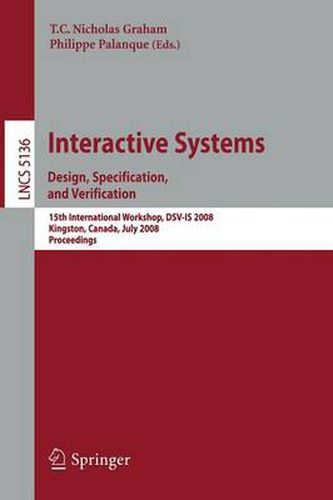Readings Newsletter
Become a Readings Member to make your shopping experience even easier.
Sign in or sign up for free!
You’re not far away from qualifying for FREE standard shipping within Australia
You’ve qualified for FREE standard shipping within Australia
The cart is loading…






This title is printed to order. This book may have been self-published. If so, we cannot guarantee the quality of the content. In the main most books will have gone through the editing process however some may not. We therefore suggest that you be aware of this before ordering this book. If in doubt check either the author or publisher’s details as we are unable to accept any returns unless they are faulty. Please contact us if you have any questions.
The modern world has made available a wealth of new possibilities for interacting with computers, through advanced Web applications, while on the go with handheld smart telephones or using electronic tabletops or wall-sized displays. Developers of modern interactive systems face great problems: how to design applications which will work well with newly available technologies, and how to efficiently and correctly implement such designs. Design, Specification and Verification of Interactive Systems 2008 was the 15th of a series of annual workshops devoted to helping designers and implementers of interactive systems unleash the power of modern interaction devices and techniques. DSV-IS 2008 was held at Queen’s University in Kingston, Canada, during July 16-18, 2008. This book collects the best papers submitted to the workshop. There were 17 full papers, 10 late-breaking and experience report papers, and two demonstrations. Keynote presentations were provided by Judy Brown of Carleton University and Randy Ellis of Queen’s University. The first day of the workshop addressed the problems of user interface evaluation and specification, with particular emphasis on the use of task models to provide hi- level approaches for capturing the intended functionality of a user interface. Day two continued this theme, examining techniques for modeling user interfaces, particularly for mobile and ubiquitous applications. Presenters also discussed advanced implem- tation techniques for interactive systems. Finally, day three considered how to arc- tect interactive systems, and returned to the themes of evaluation and specification.
$9.00 standard shipping within Australia
FREE standard shipping within Australia for orders over $100.00
Express & International shipping calculated at checkout
This title is printed to order. This book may have been self-published. If so, we cannot guarantee the quality of the content. In the main most books will have gone through the editing process however some may not. We therefore suggest that you be aware of this before ordering this book. If in doubt check either the author or publisher’s details as we are unable to accept any returns unless they are faulty. Please contact us if you have any questions.
The modern world has made available a wealth of new possibilities for interacting with computers, through advanced Web applications, while on the go with handheld smart telephones or using electronic tabletops or wall-sized displays. Developers of modern interactive systems face great problems: how to design applications which will work well with newly available technologies, and how to efficiently and correctly implement such designs. Design, Specification and Verification of Interactive Systems 2008 was the 15th of a series of annual workshops devoted to helping designers and implementers of interactive systems unleash the power of modern interaction devices and techniques. DSV-IS 2008 was held at Queen’s University in Kingston, Canada, during July 16-18, 2008. This book collects the best papers submitted to the workshop. There were 17 full papers, 10 late-breaking and experience report papers, and two demonstrations. Keynote presentations were provided by Judy Brown of Carleton University and Randy Ellis of Queen’s University. The first day of the workshop addressed the problems of user interface evaluation and specification, with particular emphasis on the use of task models to provide hi- level approaches for capturing the intended functionality of a user interface. Day two continued this theme, examining techniques for modeling user interfaces, particularly for mobile and ubiquitous applications. Presenters also discussed advanced implem- tation techniques for interactive systems. Finally, day three considered how to arc- tect interactive systems, and returned to the themes of evaluation and specification.